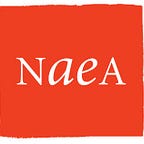Viewfinder Issue 9 — Language: Letter from the Editors
Sara Egan, Keonna Hendrick, and Kabir Singh, Viewfinder Editorial Board
For many museum educators, language is the primary mode of communication we use across audiences. We speak with visitors, docents and colleagues, telling stories and sharing ideas about our programs and our collections. Our words are powerful tools, and have the potential to either cultivate a sense of belonging, or to alienate and isolate. In this issue, Viewfinder presents three articles about the ways in which museum educators can use language responsibly to fulfill their goals of fostering equity and inclusion.
Mac Buff, in “Beyond Bathrooms: Including All Genders Through Language,” writes about the shifts in language that museums can adopt to actively welcome transgender, non-binary, and gender-non-conforming visitors. Their Gender-Inclusive Language Guide, included in the article, is a practical resource for educators and other museum staff looking to reassess the pronouns and terms that they use with individuals and groups coming to their institutions.
Veronica Alvarez shares findings from her recently-completed doctoral research on English Learners in museums where English is the dominant language. In her article “Good Teaching is Good Teaching: English Learners and Museums,” she argues that the hallmarks of quality instruction remain constant across language abilities, but identifies opportunities to further support the specific needs of English Learners.
In “That Depends on How You Define It”: Reflections on Inclusivity Language as a Flashpoint in Museum Staff and Docent Development, Laura Evans and Amy Kraehe discuss how the charged flashpoints that occur during staff or docent inclusion workshops can be opportunities to interrogate the language use with when considering visitors’ perceptions of the museum. Their work spotlights the complicated reactions that we have to language, and their article offers suggestions for working through these flashpoints to reach shared understanding and encourage personal growth.
As all of these authors discuss, the use of inclusive and intentional language benefits all visitors and is exemplary of best practices in museum education. We encourage you to consider the words you think with and communicate with, and to aim for a lexicon that is welcoming and affirming to all.
— The Viewfinder Editorial Board
Sara Egan
Sara Egan is a museum educator whose work is grounded in constructivism and the use of discussions about works of art to affirm all voices. She connects Boston students and teachers with the Isabella Stewart Gardner Museum as School and Youth Programs Manager. Sara holds a BA from Vassar College and an Ed.M. from the Harvard Graduate School of Education, and is an adjunct professor of art at Simmons College.
Keonna Hendrick
Keonna Hendrick is a cultural strategist whose teaching, writing, and strategic planning promote critical thinking, expand cultural perceptions, and support self-actualization. She currently serves as School Programs Manager at the Brooklyn Museum, where she leads a department of skilled and empathetic educators in designing learning experiences that invite learners to expand their understanding of themselves and the world. Her writing has appeared in numerous publications including the Journal of Museum Education (2017), Multiculturalism in Art Museums Today (2014) and the Journal of Folklore and Education (2016). As the co-creator of multicultural critical reflective practice, a professional development model, Keonna continues to provide professional development to educators in museums and classrooms nationally, including ArtsConnection, The Museum of Modern Art, Whitney Museum of American Art, National Art Education Association, and The Solomon R. Guggenheim Museum.
Kabir Singh
Kabir Singh is an educator, writer, and Los Angeles native. He has been teaching in art museums since 2008 and is dedicated to working towards greater equity in education and the arts. Kabir is the ICEF Program Coordinator at the J. Paul Getty Museum, where he coordinates a five-year partnership between the Getty and the Inner City Education Foundation (ICEF) network of charter schools in South Los Angeles. He is also a VTS Trainer for the organization Visual Thinking Strategies, where he leads professional development for educators nationwide in a constructivist pedagogy that teaches thinking through conversations about visual art. Kabir serves as the National Art Education Association (NAEA) Museum Education Division Pacific Regional Representative-Elect and has previously served on the board of Museum Educators of Southern California (MESC). He holds an EdM in Arts in Education from the Harvard Graduate School of Education and a BA in Art History from Columbia University.
